Rear crash prevention ratings aim to cut parking lot collisions
Bolstered by IIHS and HLDI research showing that park-assist systems reduce backing crashes, the Institute has launched a program to rate the performance of rear autobrake, which is designed to prevent or mitigate the kinds of everyday low-speed backing crashes that happen in parking lots and garages.
Parking crashes usually don't result in serious injuries, but repair costs can quickly mount, along with the hassle of going without the family vehicle while waiting for the body shop to finish work. The Institute's new ratings will help consumers shopping for a new vehicle identify the ones with technology that can help avoid the annoyance of these everyday mishaps.
Park-assist systems encompass several technologies. Parking sensors issue warning beeps and/or seat vibrations when the equipped vehicle gets too close to another vehicle or object directly behind it, or, in some cases, in front of it. Rear cross-traffic alert warns drivers of approaching vehicles that might cross their path as they back up. Rear autobrake systems detect objects behind a reversing vehicle and may automatically brake if the driver doesn't heed alerts to stop.
Research from IIHS and HLDI indicates that park-assist technologies prevent crashes, and rear autobrake shows the most benefits. General Motors' rear autobrake system is reducing backing crashes reported to police by 62 percent, a new IIHS study has found. Rear autobrake systems from GM and Subaru also are reducing the frequency of claims reported to insurers, HLDI reported in August (see "GM's rear autobrake reduces crashes," Aug. 23, 2017).
"Let's face it. Some days we all could use help backing up, whether that's in a garage with pillars that obscure your view, in a crowded mall parking lot or on a busy downtown street," says David Zuby, the Institute's executive vice president and chief research officer.
"The systems we rate in our first batch of tests will help reduce the chances of a backing fender-bender."
IIHS engineers evaluated rear autobrake systems on six popular 2017 model vehicles — the BMW 5 series sedan, Cadillac XT5 SUV, Infiniti QX60 SUV, Jeep Cherokee SUV, Subaru Outback wagon and Toyota Prius hatchback.
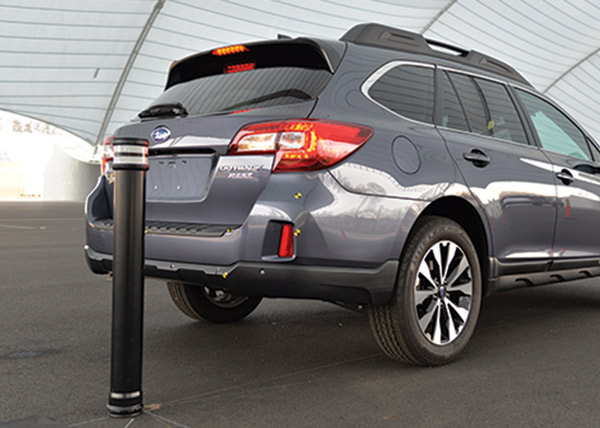
One of the tests in the Institute's new rear crash prevention assessment evaluates a rear autobrake system's ability to stop a reversing car from striking a pole — a common mishap that can lead to pricey damage to bumpers, fenders, lift gates and lights.
Under the three-tier rating scheme, models with optional or standard rear crash prevention systems are rated superior, advanced or basic. Ratings are determined by whether the vehicles have available rear autobrake and, if so, how it performs in a series of car-to-car and car-to-pole tests with different approach angles. The availability of parking sensors and rear cross-traffic alert also is factored in.
The Outback and XT5 earn the highest rating of superior when equipped with optional rear autobrake, parking sensors and rear cross-traffic alert. The Cherokee, 5 series, QX60 and Prius earn an advanced rating with this optional gear.
"There were no surprises here," Zuby says. "The Subaru and GM results are in line with the crash reductions we have seen in real-world police report and insurance loss data."
The new ratings evaluate the rear crash prevention systems' ability to prevent damage in low-speed crashes, not their ability to mitigate injuries in crashes. In that regard, they are more akin to the low-speed bumper tests the Institute once conducted to address vehicle damage in everyday fender-benders.
Results of the rear crash prevention tests are weighted to reflect data from drive-in claims centers. Rear autobrake carries the most weight because research shows it provides the biggest crash reductions. Parking sensors and rear cross-traffic alert get partial credit. HLDI has found benefits for parking sensors in reducing crashes reported to insurers, while a new IIHS study finds that rear cross-traffic alert is reducing police-reported crashes.
For a superior rating, a vehicle must have a rear autobrake system that can avoid a crash or substantially reduce speeds in many of the test scenarios, which involve multiple runs at about 4 mph. Systems are assigned points based on the number of runs that either avoid or barely hit the target, reducing speeds to less than 1 mph. For advanced, a vehicle must have rear autobrake and avoid a crash or reduce speeds in some of the scenarios. Vehicles that only have parking sensors and/or rear cross-traffic alert earn a basic rating.
The rear autobrake tests are based on a protocol developed by RCAR, an international consortium of insurance-funded research organizations working to reduce the injuries and property damage associated with automobile crashes.
The program follows the front crash prevention ratings IIHS introduced in 2013 to help speed adoption of front autobrake (see "First crash avoidance ratings: Seven midsize vehicles earn top marks," Sept. 27, 2013). Since then, automakers have voluntarily agreed to make front autobrake standard on nearly all new passenger vehicles by Sept. 1, 2022 (see "Automakers compete to add standard autobrake ahead of schedule," April 12, 2016).
Rear autobrake isn't as prevalent. The feature is optional on only 5 percent and standard on less than 1 percent of 2018 model passenger vehicles, HLDI estimates. Rear cross-traffic alert is optional on 43 percent and standard on 11 percent of 2018 models. Rear parking sensors are standard on 33 percent and optional on 59 percent of 2018 models. Rearview cameras are standard on 89 percent and optional on 10 percent of 2018 models.
Separate from the new ratings, IIHS ran demonstration tests to illustrate how parking mishaps can add up to pricey repairs. Engineers conducted four low-speed tests with and without rear autobrake, and then tallied the damage as a claims estimator would. Scenarios included the XT5 backing into a pole and the Outback reversing into a 2016 Chevrolet Cruze. When equipped with rear autobrake, the vehicles didn't strike anything, so there was no damage. Without autobrake was a different story.
The XT5 needed an estimated $3,477 in repairs after backing into a pole. Damaged parts included the bumper cover, tailgate, hitch bar, energy absorber, rear body panel, trim and assorted brackets.
When the Outback backed into the Cruze's rear bumper, the estimated damage for both cars came to $1,899 — $1,159 for the Outback and $740 for the Cruze.
How vehicles rate for rear crash prevention, 2017 models
| Superior | |
|---|---|
| Cadillac XT5 Subaru Outback |
|
| Advanced | |
| BMW 5 series sedan Infiniti QX60 Jeep Cherokee Toyota Prius |
|
Models are ranked by points awarded in IIHS autobrake tests. Vehicles can earn a total of 6 points. The top performers in this first round of ratings earn 5 points when equipped with optional rear autobrake, parking sensors and rear cross-traffic alert. The ratings don't assess occupant safety. They help identify the systems best able to prevent the more common problem of damage-only crashes.
| Rating scale | ||
|---|---|---|
| Basic | Advanced | Superior |
Rear crash prevention test scenarios
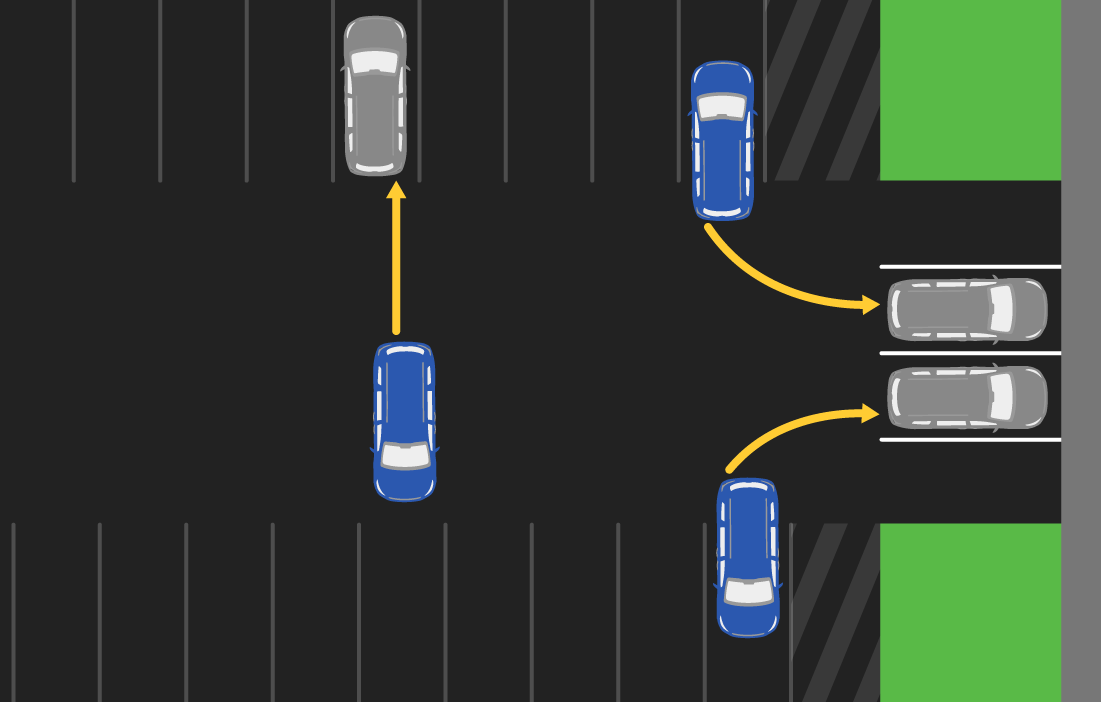
Reversing car-to-car, 16" overlap:
This scenario simulates backing out of a parking space toward a stationary vehicle (shown in gray). Test runs include reversing straight back and from the left and right toward the target. If autobrake fails to prevent a collision, the test vehicle will strike the corresponding portion of the target vehicle bumper with an overlap of 16 inches.
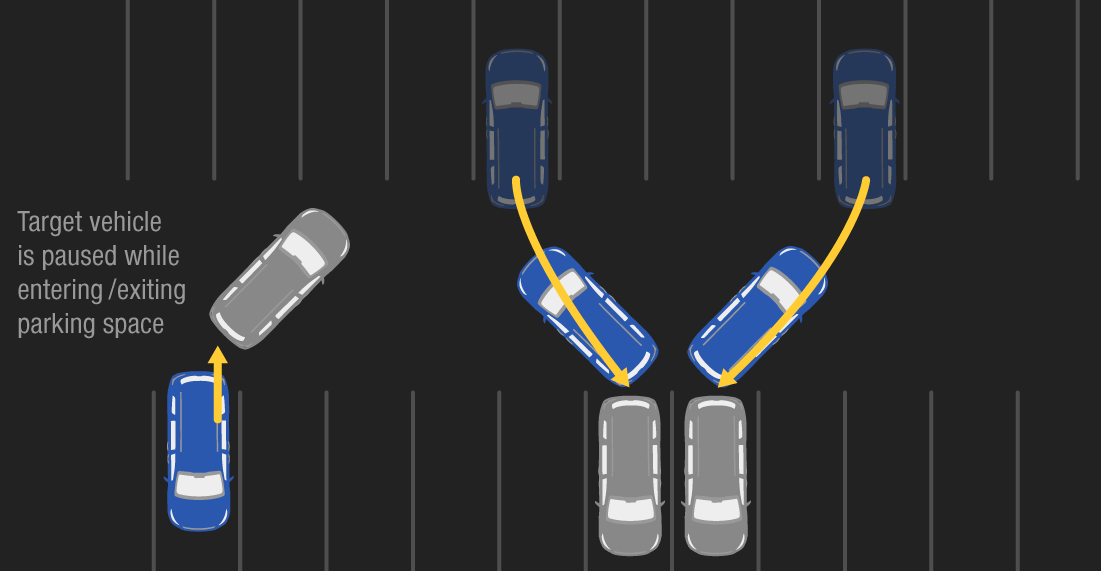
Reversing car-to-car, 45° angle:
This scenario involves reversing out of a parking space toward a stationary vehicle (shown in gray). Test runs include reversing straight back and from the left and right toward the target. If autobrake fails to intervene, the corner of the test vehicle's bumper will strike the center of the target vehicle bumper.
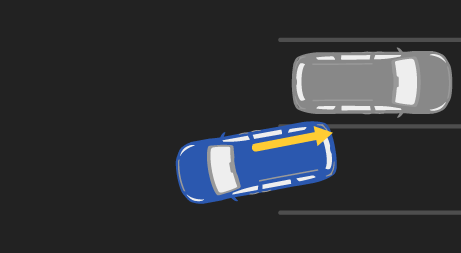
Reversing car-to-car, 10° angle:
This scenario simulates backing toward the side of an adjacent stationary vehicle (shown in gray). The test involves reversing straight back toward the target vehicle parked at a 10° angle to the test vehicle.
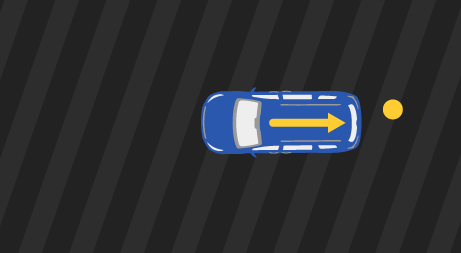
Reversing toward fixed pole:
This scenario simulates backing into a pole or garage pillar. The test car reverses straight toward a bollard that is aligned midway between the center line and bumper corner.



